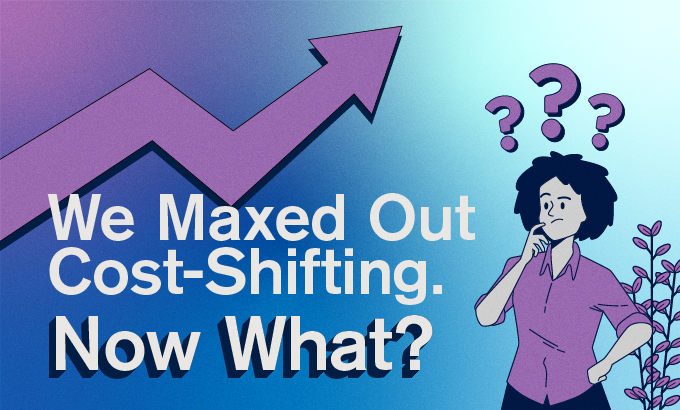When Absorbing Healthcare Costs is No Longer an Option

We all understand the current realities of our healthcare system. Deductibles are high, member cost-sharing is at a tipping point, and employers can’t keep absorbing 10% premium increases. When employers can no longer take on the cost of health benefits, they are faced with the difficult decision of layoffs, scaling back operations, or even closing the door.
As an industry, we’ve maxed out the ways to cost shift. Employers are at the ceiling, and now they’re asking, “Where do we go from here?”. That’s why it’s our job to dig deep and get creative to bring innovative solutions to the table that make a real impact.
How We Got Here – High-Deductible Health Plans
The rise of high-deductible health plans (HDHPs) was fueled by a simple idea: if members had more financial responsibility, they’d make smarter, cost-conscious decisions. On paper, that made sense.
The problem? For years, members had no real way of knowing what their care would actually cost. Before Transparency in Coverage (TiC) rules, pricing information was hidden in black boxes. Members were expected to shop for care without the basic information needed to compare providers.
The result wasn’t smarter decisions; it was avoidance of care. People skipped preventive visits and delayed treatment. Conditions that could have been managed early turned into complex, high-dollar claims. What was designed to control costs ended up backfiring in too many cases.
Course Correction – Creative Health Plan Models
We’ve learned that simply shifting dollars around isn’t sustainable. The real opportunity is rethinking how plans are structured and how care is delivered. That means exploring models that meet people where they are and remove barriers to the right kind of care.
Some of the most Effective Approaches we’re seeing include:
- Reference-based pricing that ties payments to objective benchmarks, cutting out inflated facility billing.
- Narrow networks that prioritize quality and value over sheer size.
- Direct contracting with local providers, giving members better access and employers more predictable costs.
- Care navigation and advocacy services that help members make decisions with confidence rather than fear.
These models aren’t just about cost; they’re about improving the experience, creating trust, and putting long-term health outcomes back in focus.
The Path Ahead for Health Benefits
We’ve reached the breaking point for the old way of doing things. The next phase of health benefits will be about innovation, accountability, and partnership.
Employers, Advisors, and solution partners need to work together to build ecosystems where:
- Preventive care is incentivized, not penalized.
- Data and transparency drive decisions, not guesswork.
- Member experience is viewed as a lever for cost control.
- Plan design is flexible enough to adapt to different workforce needs.
If we can align around those priorities, we’ll finally move beyond the cycle of cost-shifting and reactionary adjustments.
Conclusion
One thing is clear: we can’t squeeze any more out of members or employers. The ceiling has been hit. The future of sustainable health benefits depends on creativity, courage, and a willingness to break old patterns.
Those of us in this industry have a responsibility to lead the way with Bold Ideas that balance financial sustainability with healthier outcomes for the people plans are meant to serve.